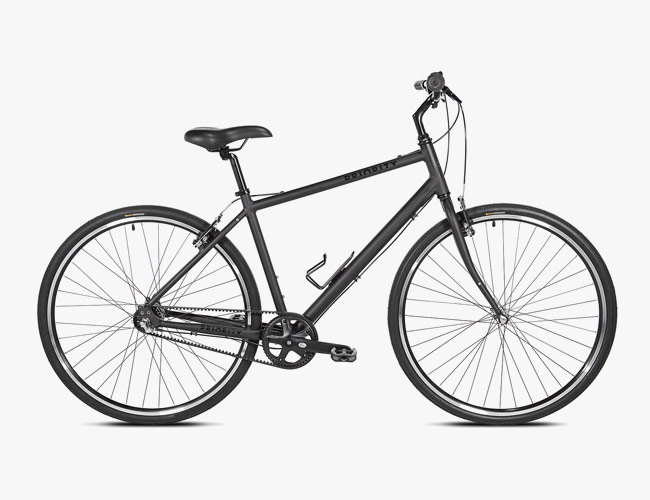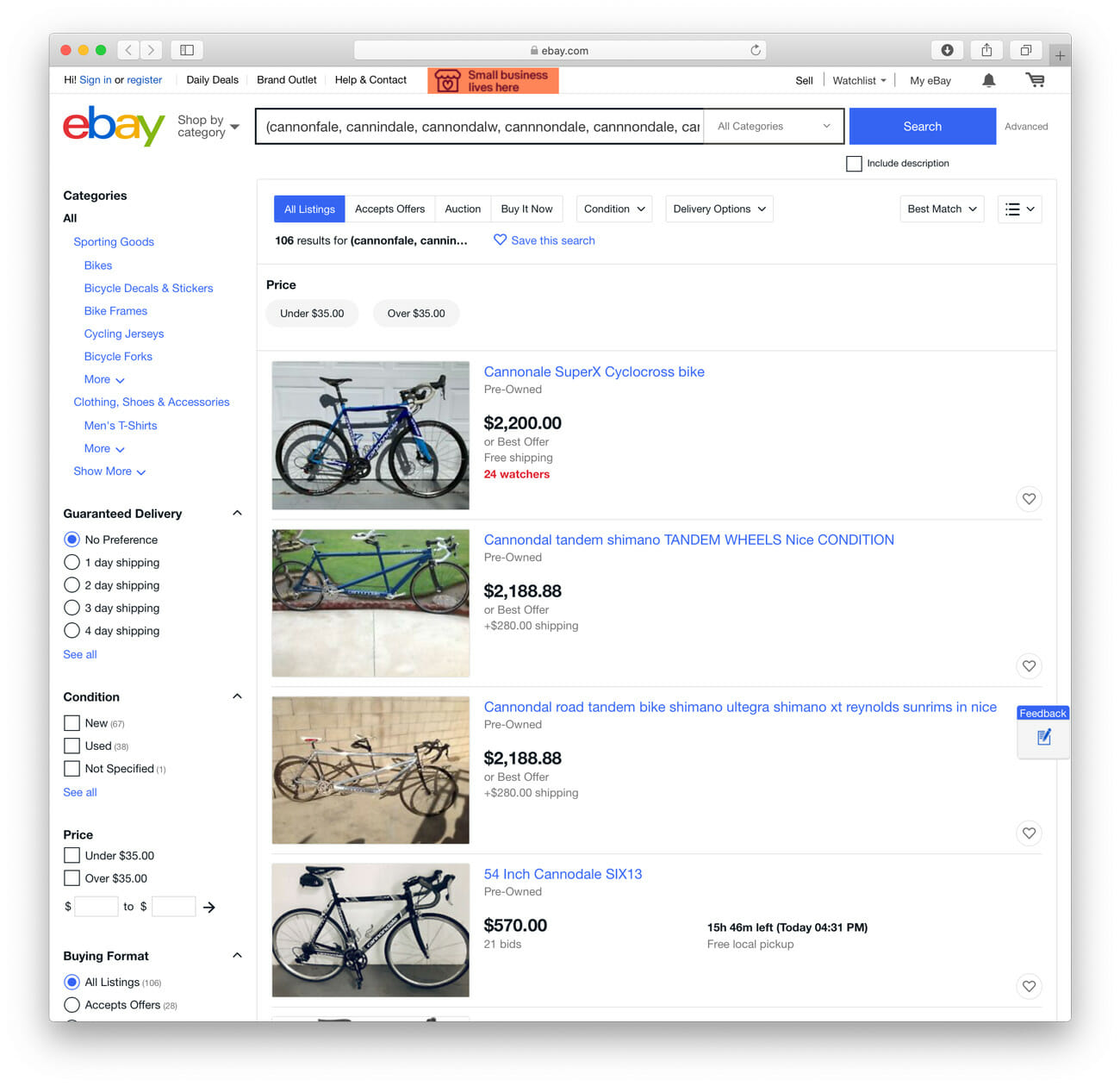This guide to the best commuter bikes of 2018 provides 10 awesome bikes to get you to and from work and also offers tips and advice to know before you buy.
Editor’s Pick: Mosaic CT-1
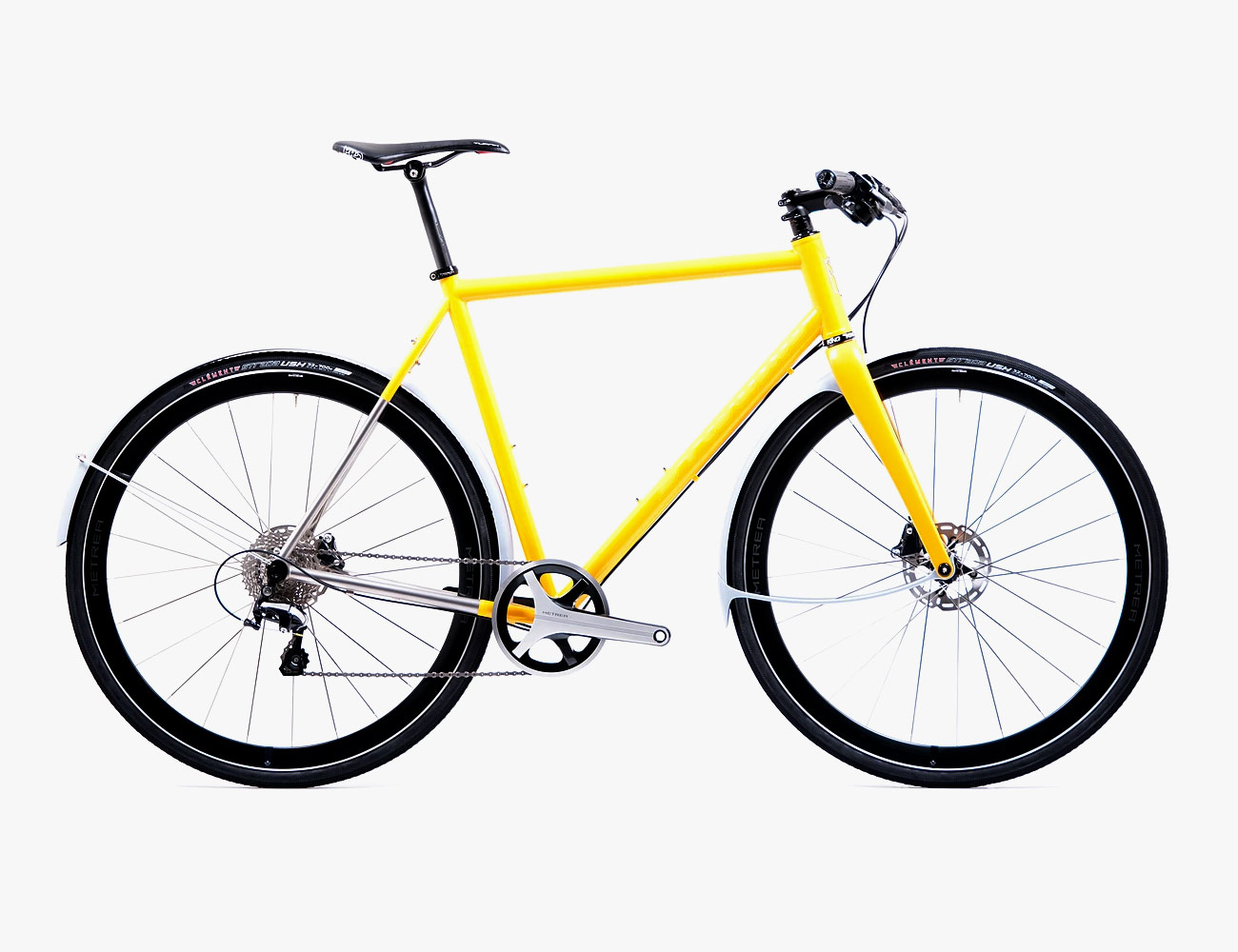
The best way to describe Mosaic’s CT-1 commuter bike is simply superlative. It’s the best commuter bike that money can buy. It does, of course, come with a lofty price tag. The bike is made from titanium tubing and is hand-built by Aaron Barcheck in Colorado. It features a Shimano Metrea groupset that leaves little to be desired in the way of looks or performance.
Barcheck began shaping with titanium at Colorado’s Dean Bicycles, where he worked for seven years. He immediately gravitated to the metal, which doesn’t need to be coddled, is rust-proof and easily refinished, and almost never suffers catastrophic failure (unlike carbon). Not to mention the ride quality, for which the material is famously comfortable. “Titanium is this really awesome, versatile material,” Barcheck said. “It’s not always going to be the lightest, not always going to be the stiffest, but it’s going to get a nine out of ten in every category. And when it’s machined the right way, mitered the right way, welded the right way and finished the right way, it should be a bike you’re going to have for a really, really long time.”
Barcheck is currently making the best American-made titanium bikes. Detail, finish, paint, ride quality — it’s all there. The Mosaic CT-1 is no exception, and best of all, because every bike is custom, you can build it to the exact specifications that you want.
Introduction
Long gone are the days when the commuter bike was an old-school mountain bike with a potpourri of parts and a rear wheel that was only roughly true. A rise in people looking to build fitness, lower their carbon footprint or simply have fun while getting around has created a big market for commuter bikes — from super stylish retro single speeds to those that borrow from road bikes for speed and mountain bikes for durability. Mash all of this up with internal gearing, belt drives and integrated lighting systems, and the commuter bike suddenly forms. Here are some of our favorites for 2018.
Additional contribution by Henry Phillips, Tanner Bowden and Matthew Ankeny.
How To Get The Right Fit
Fix Your Posture: While there is no substitute for a professional fit, many feelings of discomfort and soreness simply result from improper riding structure. To get a feel for how you should be sitting on your saddle, stand with your feet about as wide apart as they would be when pedaling. Bend your knees slightly and lean forward, keeping your back as straight as possible. You should feel the muscles in your lower back activate, along with those in your core. Sticking to this body position while on the bike will help to take the stress off your vertebrae, which is induced by leaning over and bending your spine. It also helps to keep your chest open, allowing for more efficient oxygen intake.
Start with the Saddle: If possible, try out a number of different saddles. Everyone’s body is shaped differently; what’s most comfortable for Chris Froome probably isn’t what’s most comfortable for you. Comfort is subjective, so the more saddles that you can try, the better. Tanner personally recommends Pro’s Stealth saddle, but it may not work for everyone. Saddles with center cutouts tend to be more comfortable when you’re sitting in the correct position with the correct posture on the bike.
Adjust Your Handlebars: As with saddles, it’s best to try out a number of different stem lengths if possible. While sitting with the correct posture, you should be comfortable reaching for the bars without putting too much weight on your hands. If you feel like you’re using too much muscle in your shoulders, or there’s too much weight on your hands, try adjusting your stem up or down using spacers and swapping to a shorter stem.
Buying Guide
Mosaic CT-1

Editor’s Pick: The best way to describe Mosaic’s CT-1 commuter bike is simply superlative. It’s the best commuter bike that money can buy. It does, of course, come with a lofty price tag. The bike is made from titanium tubing and is hand-built by Aaron Barcheck in Colorado. It features a Shimano Metrea groupset that leaves little to be desired in the way of looks or performance.
Barcheck began shaping with titanium at Colorado’s Dean Bicycles, where he worked for seven years. He immediately gravitated to the metal, which doesn’t need to be coddled, is rust-proof and easily refinished, and almost never suffers catastrophic failure (unlike carbon). Not to mention the ride quality, for which the material is famously comfortable. “Titanium is this really awesome, versatile material,” Barcheck said. “It’s not always going to be the lightest, not always going to be the stiffest, but it’s going to get a nine out of ten in every category. And when it’s machined the right way, mitered the right way, welded the right way and finished the right way, it should be a bike you’re going to have for a really, really long time.”
Barcheck is currently making the best American-made titanium bikes. Detail, finish, paint, ride quality — it’s all there. The Mosaic CT-1 is no exception, and best of all, because every bike is custom, you can build it to the exact specifications that you want.
Best Budget Commuter: Priority Bicycles Classic Plus Gotham Edition
Priority Bicycle’s Classic Plus Gotham Edition is built for a user who doesn’t want to have to worry about leaving a bike out in the rain, sleet, snow or anything else the weather throws at it. The all-black design features grease and rust-free Gates Carbon Belt drive alongside a 3-speed Shimano internal hub shifter. The tires are puncture resistant meaning you don’t have to cringe every time you hit a speed bump, broken glass or pass by a construction site. Pair with a rear rack or a front basket from Priority and it’s easy to get to work, the grocery store or dinner.
State Bicycle Co. Elliston Deluxe
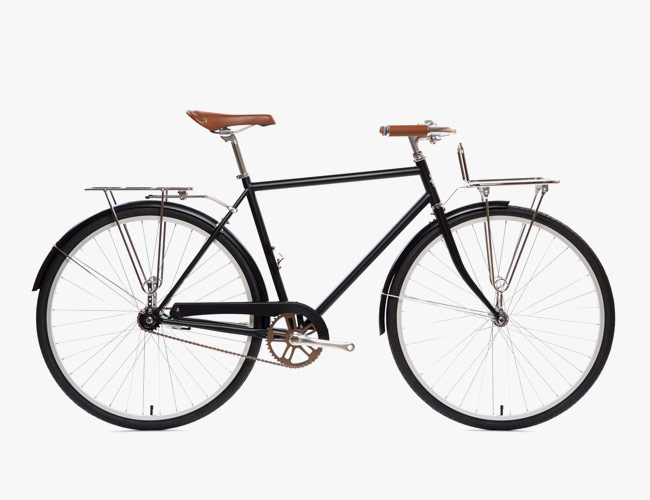
Best Full-Featured Commuter: State Bicycle Co. designed the Elliston Deluxe to ride well and look great doing it. The single-speed steel commuter is available in three sizes (the medium is available with three speeds for an additional fee), each of which are equipped with mustache handlebars, coaster brakes and 35c tires. Beyond those crucial functional elements, the Elliston comes with front and rear racks, a bell and of course, a bottle opener.
Raleigh Carlton 8
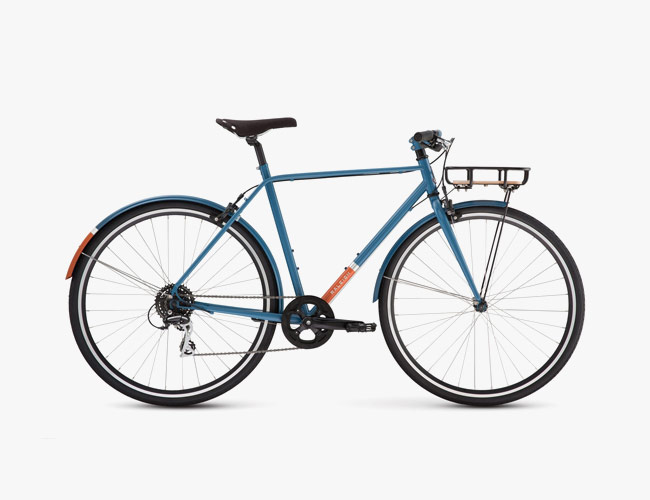
Most Stylish Commuter: Raleigh’s eight-speed Carlton is a solid affordable option that doesn’t need customization. The Carlton uses a steel, diamond-shaped frame with dual top tubes as a base for a range of good components including a Shimano drivetrain, front and rear fenders and a low-profile basket that contains an unfinished wooden platform. Additional details include a bell and reflective tape on the frame (for those who arrive early and leave late).
Brompton
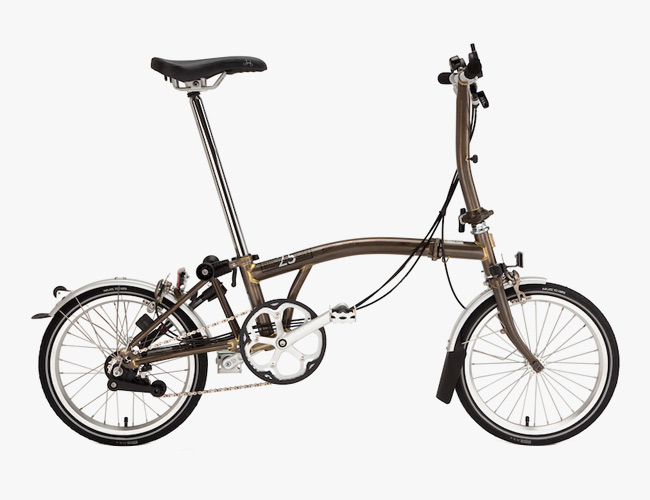
Best Commuter for Storing in an Apartment: Folding bikes are perfect for those who commute via bus or train, but have longer trips to and from the stations. UK-based Brompton makes some of the finest folding bikes with an easy mechanism to fold it up and tuck it away. It also comes with built in fenders to save you from getting soaked when riding through a puddle.
Open New U.P.
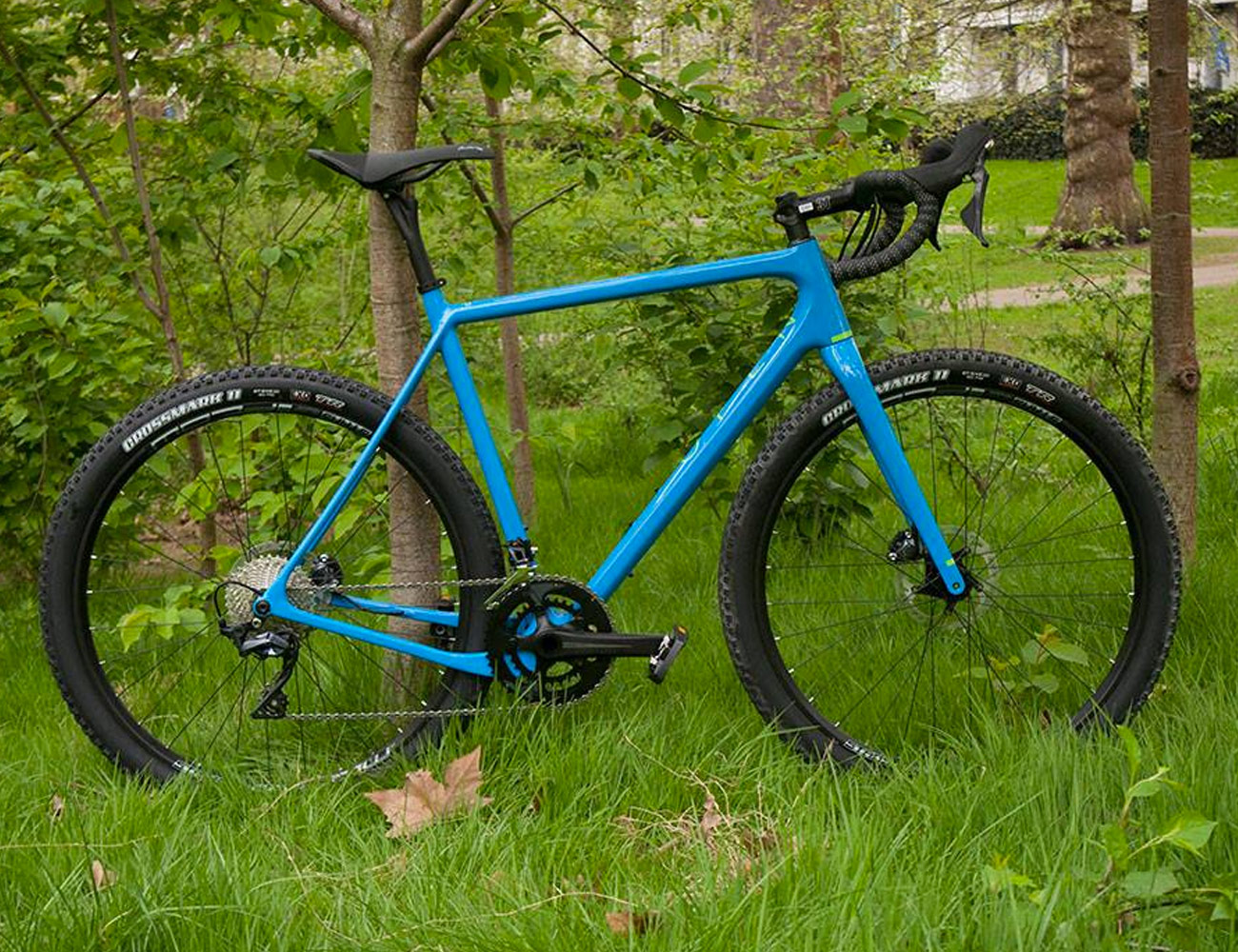
Best Rough Road Commuter: The U.P., which stands for unbeaten path, takes the geometry of aggressive road riding frames and optimizes it for gravel crushing, slackening the head-tube angle degree and keeping the rear chainstays short, while still allowing for mountain bike tires up to 2.1 inches wide on a 650b rim, a 40mm cross tire or a 28mm road tire on a 700c rim. The bottom bracket is also slightly higher off the ground to allow for extra clearance over obstacles. Taking hints from mountain bike technology, all of its cables are internally routed to keep your brake and shift lines clean and clear of gunk as well as sheltered from any potential damage.
If you are hopping on the gravel-grinder train, but want a bike that can do a bit of everyting (including commute), the Open U.P. is the best available. While it might not beat out a road bike on a road ride or a mountain bike on a mountain bike ride, it can float easily to either end of the spectrum without skipping a beat and will crush most any other bike where the U.P. feels most at home: gravel roads.
Linus Rambler 7
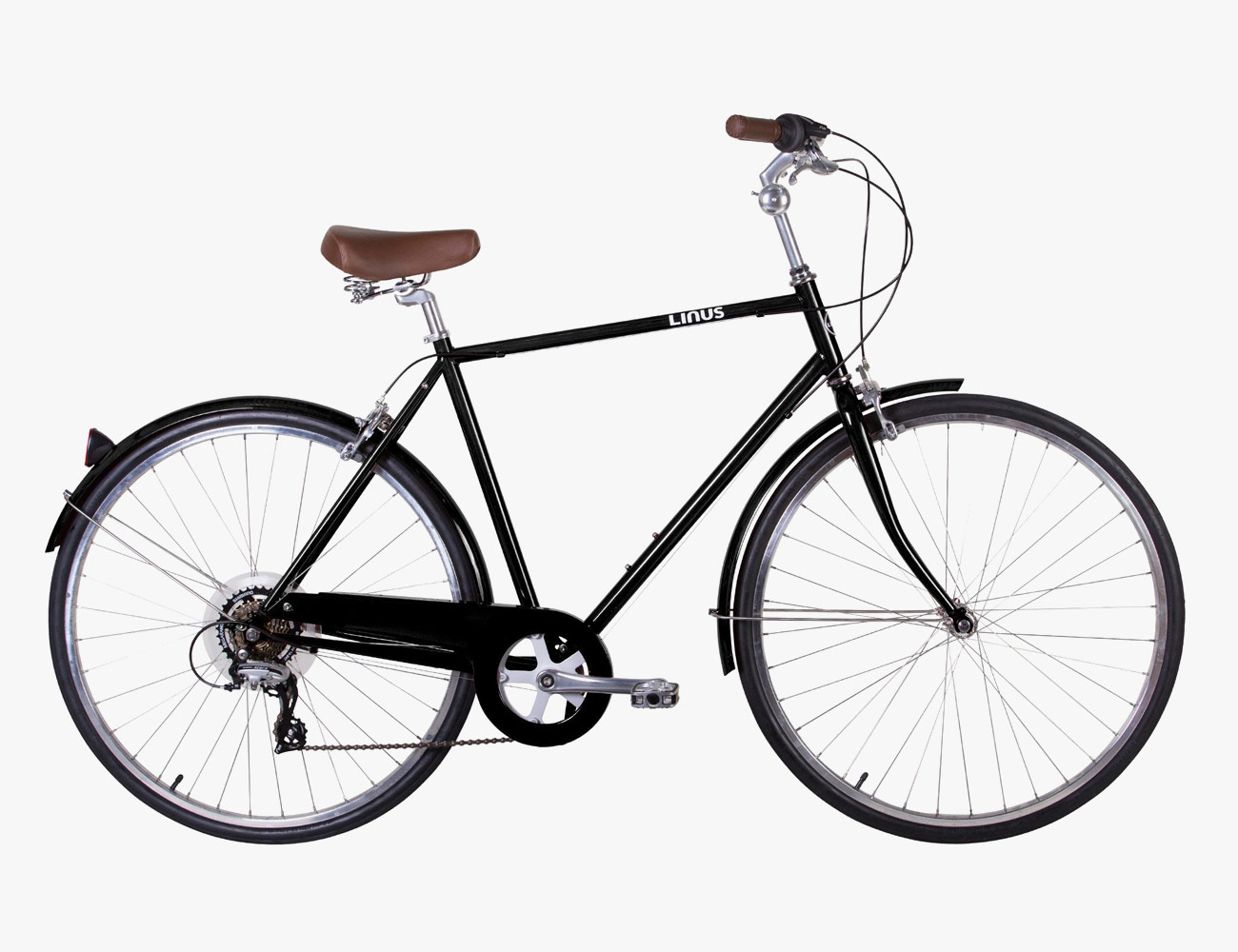
Best Classic Commuter: Linus’s Rambler 7 is a simple commuter, while still offering all of the necessities like a seven-speed drivetrain, chain guard, front and rear brakes, a bell and fenders. The styling is also as classic as it gets: swoopy handlebars, an upright riding position and a spring-loaded brown leatherette saddle. At this price point and with this styling, the Rambler 7 is hard to beat.
Cannondale Bad Boy 1
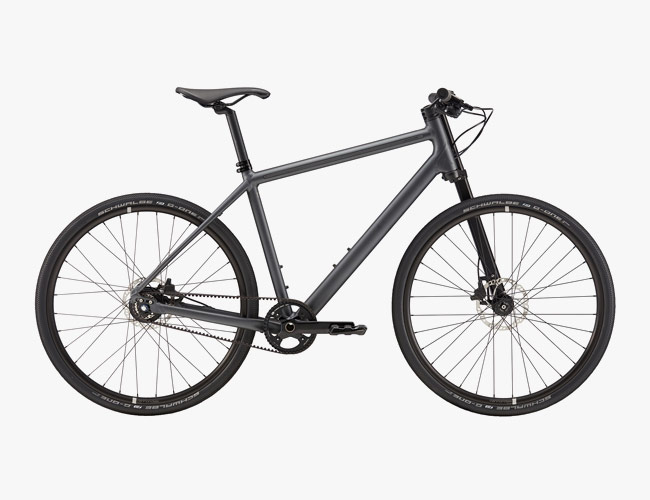
Best Commuter for Roadies: We labeled the Bad Boy 1 as “perfect” when we reviewed it and we stand by our assessment. It features everything you want in a commuter bike — built-in lights, 50mm of suspension, disc brakes and a Shimano Alfine 8-speed hub (instead of a rear derailleur) which will keep your bike shifting smoother, longer.
Budnitz No. 3
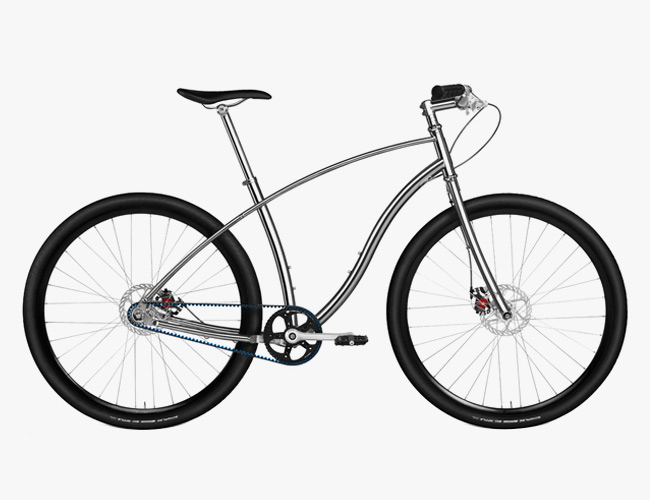
Most Unique Frame Design: The Budnitz No. 3 is a commuter bike that has a mean streak and likes to be ridden fast. The steel (or titanium) frame has a semi-racy geometry and accommodates 29-inch wheels which allow you to run tires up to 2.35-inches wide. It is also available with a low maintenance 14-Speed Rohloff Speedhub and comes standard with a Gates Carbon Drive belt.
Specialized Turbo Vado 6
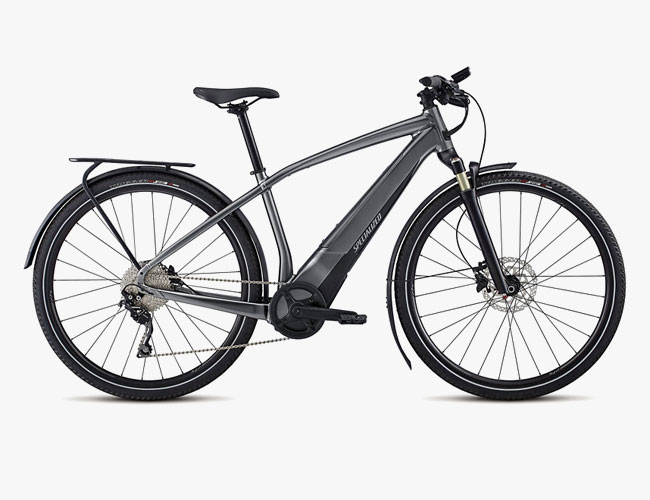
Best Commuter E-Bike: Specialized designed the Turbo Vado to be a bike first. That means the mechanical system is fully integrated, with internally routed cables and a concealed motor. It’s sleek and uncluttered, and for the most part looks like a normal bicycle. The 40-cell battery and belt-driven motor, which together power the Turbo Vado to speeds up to 28 mph, is fully incorporated into the downtube of the E5 aluminum frame. Components include an 11-speed Shimano cassette and front and rear Tektro Zurich custom hydraulic disc brakes. There are also built-in extras, made possible by the electronic system, like a removable handlebar-mounted display and a brake-responsive tail light integrated into the rear rack.
How To Take Care of Your New Bike
Lube Your Chain
One incredibly simple way to keep your bike running smoothly is lubricating your chain. What’s even better is that it requires exactly zero tools. Here’s what to do:
Clean: Just wipe the chain down with a rag and a bit of soapy water followed by a dry rag to clean as much existing grit off the chain as possible.
Apply Lube: Drip a quality chain lube like WD-40’s Bike line over the entire length of chain. Don’t go too crazy — just aim for the rollers (the spots where the chain articulates).
Wipe: This is the bit that most people ignore, resulting in a grimy chain and stained legs. Wipe off the chain to get rid of all excess lube. We’re only concerned with the stuff that gets inside the chain.
Fix A Flat
This is essential knowledge if you plan to ride solo or care what your fellow riders think of you. All you need in advance is your spare tube, a tire lever and some means of inflating the tube — CO2 or a hand pump if you’re on the road, floor pump if you’re at home.
Remove the Deflated Tube and Tire: Slide your tire lever in between the bead of the tire and the rim opposite the tube’s valve. Unseat the tire and then work your way around until half of the tire is completely off the rim. Push the rest of the tire and tube off the wheel; it should be loose enough to remove by hand.
Check the Tire: Carefully run your fingers along the inside of the tire, checking for sharp objects that may have popped your tube. While you have the tire removed, check the wheel for anything sharp that may have caused the flat.
Partially Inflate New Tube: Give the fresh tube just a couple pumps of air to give it some shape.
Re-Seat the Tire: Pop half of the tire back on the wheel then insert the tube’s valve into the wheel. Work around the wheel, pushing the tube between the two sides of the tire.
The Final Push: Work the remaining side of the tire back onto the wheel with both hands starting at the valve hole and moving each hand in opposite directions. The point where both hands meet is usually where the tire will be the toughest to get on, but be persistent and try to fight the urge to use your tire levers.
Check and Check Again: Once you hear that glorious snap of the final part of the tire seating itself on the wheel, do a quick inspection around the tire to make sure the tube isn’t caught between the tire bead and the rim. If it looks good, inflate your tire to about a quarter of its final pressure and then do another check to make sure the tire is seated evenly around the rim with no low or high spots.
Fully Inflate: Finally, re-inflate the tire to full pressure and put the wheel back on the bike.
Adjust Your Shifting
This is a pretty specific quick fix, but there’s nothing more frustrating than sluggish or unresponsive shifting when you’re on a ride. Luckily, fixing it usually only takes a simple turn of a knob.
Shifting is all about how tight the cable is that runs between either the front shifter or rear shifter and its respective derailleur. If your bike won’t shift to a bigger cog or chaining, you likely need more tension in the system, and if it won’t shift to a smaller cog or chainring, you likely need less tension. The key is to find the perfect balance between the two where everything operates smoothly.
Adjusting the Rear Derailleur: To adjust cable tension on the rear derailleur, turn the small knob on the very back of the mechanism by hand. Counter clockwise will add tension (and aid upshifting), clockwise will remove it (and aid downshifting). To find the right balance spin the pedals and shift the bike until it moves quickly and smoothly both up and down at your command.
Adjusting the Front Derailleur: Adjusting the front is almost exactly the same process except the barrel adjuster will likely be either on the left side of your frame where it first meets the fork or somewhere along the cable between the shifter and the frame. Luckily, after that it’s the same process: counter-clockwise to add tension and help the derailleur move outwards and clockwise to decrease tension and get it to move inwards.
Troubleshooting: Shifting can be fickle. If you can’t quite get it right with these steps, bring your bike into a shop and mechanics will be able to check if it needs more thorough adjustment or even a replacement part.
Note: Purchasing products through our links may earn us a portion of the sale, which supports our editorial team’s mission. Learn more here.
Technical fabrics, elevated style. Read the Story


